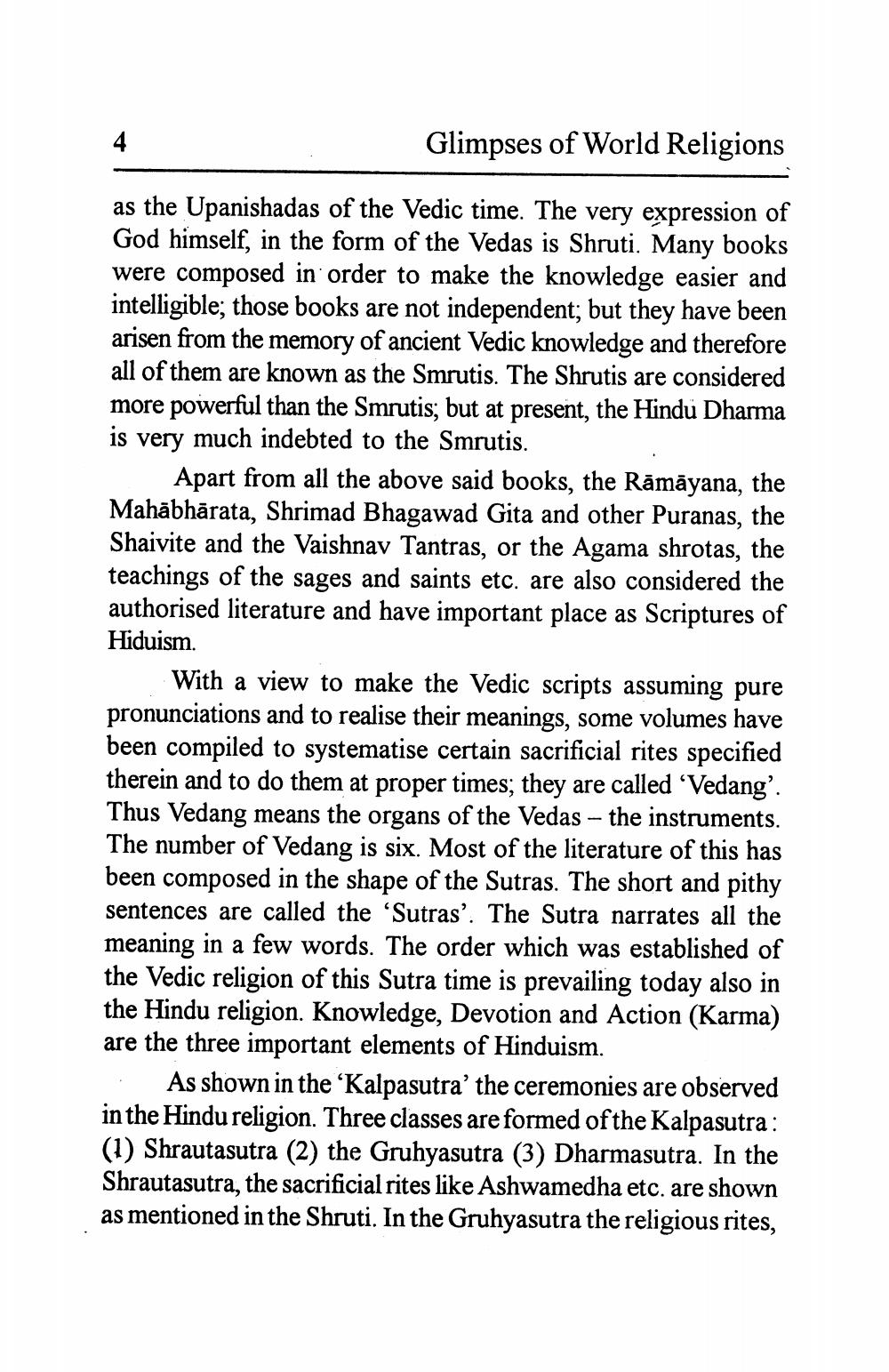________________
Glimpses of World Religions
as the Upanishadas of the Vedic time. The very expression of God himself, in the form of the Vedas is Shruti. Many books were composed in order to make the knowledge easier and intelligible; those books are not independent; but they have been arisen from the memory of ancient Vedic knowledge and therefore all of them are known as the Smrutis. The Shrutis are considered more powerful than the Smrutis; but at present, the Hindu Dharma is very much indebted to the Smrutis.
Apart from all the above said books, the Rāmāyana, the Mahābhārata, Shrimad Bhagawad Gita and other Puranas, the Shaivite and the Vaishnav Tantras, or the Agama shrotas, the teachings of the sages and saints etc. are also considered the authorised literature and have important place as Scriptures of Hiduism.
With a view to make the Vedic scripts assuming pure pronunciations and to realise their meanings, some volumes have been compiled to systematise certain sacrificial rites specified therein and to do them at proper times, they are called 'Vedang’. Thus Vedang means the organs of the Vedas – the instruments. The number of Vedang is six. Most of the literature of this has been composed in the shape of the Sutras. The short and pithy sentences are called the ‘Sutras'. The Sutra narrates all the meaning in a few words. The order which was established of the Vedic religion of this Sutra time is prevailing today also in the Hindu religion. Knowledge, Devotion and Action (Karma) are the three important elements of Hinduism.
As shown in the ‘Kalpasutra’ the ceremonies are observed in the Hindu religion. Three classes are formed of the Kalpasutra : (1) Shrautasutra (2) the Gruhyasutra (3) Dharmasutra. In the Shrautasutra, the sacrificial rites like Ashwamedha etc. are shown as mentioned in the Shruti. In the Gruhyasutra the religious rites,




